

St. Brendan the Navigator: The Voyage of the Saint and the Search for the Promised Land
St. Brendan the Navigator, also known as Brendan of Clonfert, is one of the most intriguing figures in the annals of Irish Christianity. Celebrated as a daring seafarer and explorer, he is best known for his legendary voyage in search of the “Promised Land of the Saints.” This article delves into the life of St. Brendan, the tales of his voyages, and the enduring legacy of this adventurous saint.
Early Life and Spiritual Formation
St. Brendan was born around 484 AD in County Kerry, Ireland. He was baptized by St. Erc, a bishop who recognized Brendan’s spiritual potential and provided him with his early education. Brendan was then sent to a monastery school for further education, where he was ordained a priest at the age of 26.
Founding Monasteries
St. Brendan is noted for founding numerous monastic settlements across Ireland. The most famous of these is Clonfert in County Galway, established around 557 AD. These monasteries served as important centers of learning, echoing the Celtic tradition of combining Christian faith with holistic education.
The Voyage of St. Brendan
St. Brendan’s most famous contribution to Irish religious folklore is his legendary voyage across the Atlantic. According to “Navigatio Sancti Brendani Abbatis” (The Voyage of Saint Brendan the Abbot), Brendan was inspired by the story of St. Barinthus, who claimed to have discovered a land of abundance, which Brendan understood to be the “Promised Land of the Saints.”
Intrigued and driven by spiritual curiosity, Brendan decided to undertake a voyage to discover this Promised Land. He reportedly built a curragh, a type of Irish boat with a wooden frame covered in animal hides, and set sail with a group of fellow monks.
Encounters and Miracles
The tales of Brendan’s voyage, which reportedly lasted seven years, are filled with fantastical elements. His journey, as depicted in the Navigatio, included encounters with enormous sea creatures, a floating crystal pillar, an island that turned out to be a sea monster, and a mysterious island inhabited by a hermit.
One of the most captivating stories from Brendan’s voyage is the Easter celebration on the back of a whale. According to the tale, Brendan and his crew, unable to find land during Easter, landed on a small island to hold Mass. As they concluded the service, the island began to move and they realized they had been on the back of a giant sea creature, presumably a whale.
The Land of Promise
The climax of St. Brendan’s voyage was the discovery of the Land of Promise. This land, as described in the Navigatio, was a paradise filled with lush vegetation, abundant flowers, and rich fruits. After spending forty days exploring this land, an angel appeared to Brendan and told him to return to Ireland. The angel informed Brendan that the Land of Promise would remain hidden until the end of time.
Return to Ireland
Following his epic voyage, St. Brendan returned to Ireland where he continued his ecclesiastical work. His accounts of the voyage spread far and wide, inspiring numerous manuscripts and adaptations.
Death and Sainthood
St. Brendan died in 577 AD at the monastery of Annaghdown while visiting his sister Briga. He was buried in Clonfert, and his tomb soon became a pilgrimage site. Although there are no records of his formal canonization, his sainthood was widely recognized by local Christian communities, and he was venerated as the patron saint of sailors and travelers.
Impact and Influence of the Voyage
St. Brendan’s legendary journey ignited the imagination of many explorers in the centuries that followed. The detailed descriptions of his voyage were used as a navigational guide in the Middle Ages, inspiring a belief in a land beyond the known world.
The belief in St. Brendan’s Island, an island supposedly discovered by Brendan during his voyage, persisted on maps until the 19th century. Some have even proposed that Brendan reached the Americas long before Columbus, although this theory is a subject of ongoing debate.
St. Brendan in Art and Literature
The tales of St. Brendan’s voyage have had a lasting influence on art and literature. He has often been depicted in a boat or holding an oar, symbolizing his seafaring adventures. In literature, his voyage has been the subject of numerous adaptations, including novels, poems, and plays.
One of the most famous literary works based on Brendan’s journey is the Latin poem “Navigatio Sancti Brendani,” which dates back to at least the 9th century. This poem has been translated into many languages and has inspired countless retellings.
Modern Celebrations and Veneration
St. Brendan’s feast day is celebrated on May 16th, and he is venerated as the patron saint of sailors, mariners, and travelers. In many coastal communities in Ireland and elsewhere, St. Brendan’s Day is marked with processions and special church services. In addition, many seafaring traditions and customs are associated with St. Brendan, highlighting his enduring influence on maritime culture.
St. Brendan’s Legacy
While the historical accuracy of St. Brendan’s voyage is a subject of debate, its influence on Christian tradition and folklore is undeniable. The stories of his journey continue to captivate the imagination, symbolizing the human quest for spiritual discovery and exploration.
St. Brendan’s life and journey embody the spirit of adventure inherent in the Christian quest for spiritual truth. His voyage represents the journey of the soul towards the divine, navigating through the unknown in search of the Promised Land.
St. Brendan and the Christian Imagination
The tale of St. Brendan’s voyage continues to hold a unique place in the Christian imagination. It combines elements of adventure, faith, and the miraculous, providing a rich narrative that has been retold and reimagined across the centuries.
From a broader perspective, St. Brendan’s voyage can be viewed as a metaphor for the Christian journey through life. Just as Brendan navigated through uncharted waters, facing both peril and wonder, so too does the Christian navigate through the trials and joys of life, guided by faith towards the ultimate Promised Land.
St. Brendan and Irish Cultural Identity
St. Brendan is not only a significant figure in Christian history, but he also holds a special place in Irish cultural identity. His story ties together elements of monastic spirituality, a deep connection with nature, and a spirit of exploration and adventure. As such, St. Brendan embodies many of the qualities and values that are central to Irish cultural identity.
In conclusion, St. Brendan the Navigator remains one of the most fascinating figures in Irish Christian history. His legendary voyage continues to inspire, reminding us of the power of faith, the allure of the unknown, and the limitless possibilities of the human spirit.
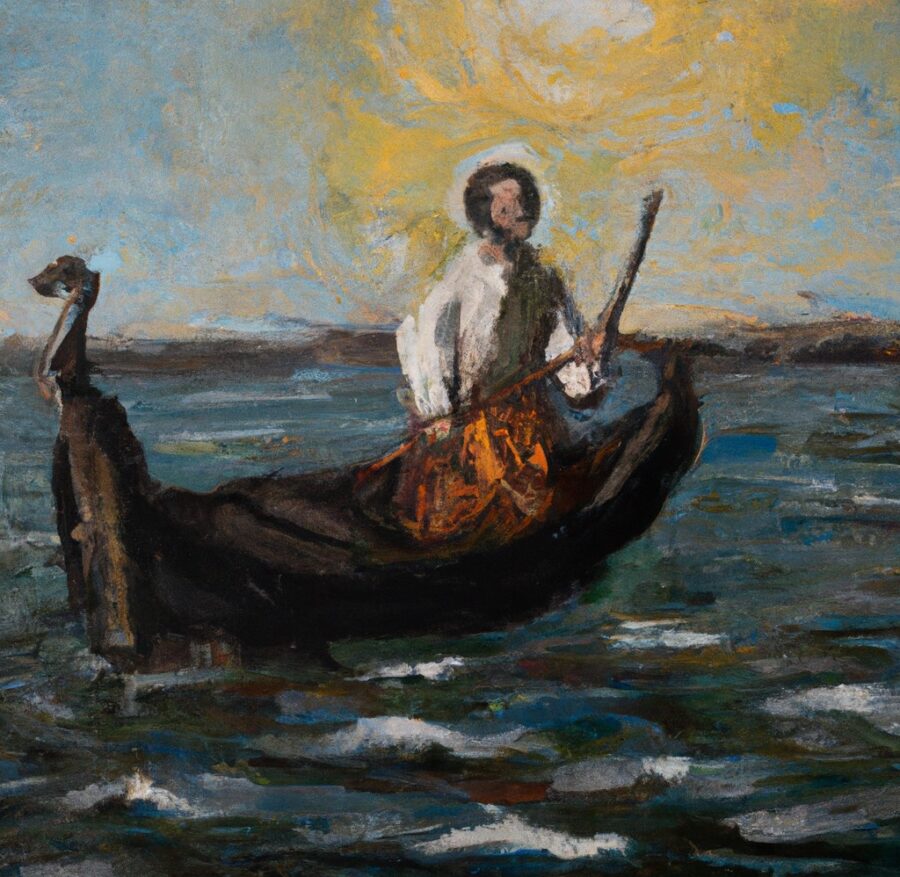
Did you find this helpful?
Related posts.
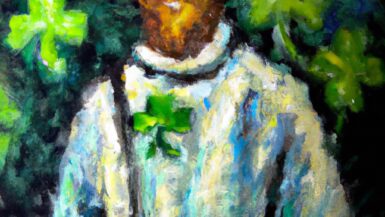
St. Patrick: The Patron Saint of Ireland and His Legendary Exploits
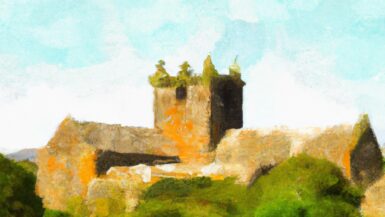
St. Columba: The Irish Saint Who Battled a Monster and Converted Scotland
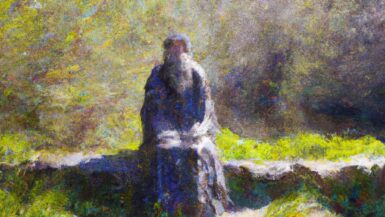
St. Kevin of Glendalough: A Hermit’s Life, Miracles, and the Blackbird’s Nest
Leave a reply cancel reply.
Your email address will not be published. Required fields are marked *
Save my name, email, and website in this browser for the next time I comment.
St. Brendan
Please help support the mission of New Advent and get the full contents of this website as an instant download. Includes the Catholic Encyclopedia, Church Fathers, Summa, Bible and more — all for only $19.99...
St. Brendan of Ardfert and Clonfert , known also as Brendan the Voyager, was born in Ciarraighe Luachra, near the present city of Tralee, County Kerry, Ireland , in 484; he died at Enachduin, now Annaghdown, in 577. He was baptized at Tubrid, near Ardfert, by Bishop Erc. For five years he was educated under St. Ita , "the Brigid of Munster", and he completed his studies under St. Erc, who ordained him priest in 512. Between the years 512 and 530 St. Brendan built monastic cells at Ardfert, and at Shanakeel or Baalynevinoorach, at the foot of Brandon Hill. It was from here that he set out on his famous voyage for the Land of Delight. The old Irish Calendars assigned a special feast for the "Egressio familiae S. Brendani", on 22 March; and St Aengus the Culdee, in his Litany, at the close of the eighth century, invokes "the sixty who accompanied St. Brendan in his quest of the Land of Promise". Naturally, the story of the seven years' voyage was carried about, and, soon, crowds of pilgrims and students flocked to Ardfert. Thus, in a few years, many religious houses were formed at Gallerus, Kilmalchedor, Brandon Hill, and the Blasquet Islands, in order to meet the wants of those who came for spiritual guidance to St. Brendan.
Having established the See of Ardfert, St. Brendan proceeded to Thomond, and founded a monastery at Inis-da-druim (now Coney Island, County Clare), in the present parish of Killadysert, about the year 550. He then journeyed to Wales , and thence to Iona , and left traces of his apostolic zeal at Kilbrandon (near Oban) and Kilbrennan Sound. After a three years' mission in Britain he returned to Ireland , and did much good work in various parts of Leinster, especially at Dysart (Co. Kilkenny), Killiney (Tubberboe), and Brandon Hill. He founded the Sees of Ardfert, and of Annaghdown, and established churches at Inchiquin, County Galway , and at Inishglora, County Mayo. His most celebrated foundation was Clonfert , in 557, over which he appointed St. Moinenn as Prior and Head Master. St. Brendan was interred in Clonfert , and his feast is kept on 16 May.
Voyage of St. Brendan
St. Brendan belongs to that glorious period in the history of Ireland when the island in the first glow of its conversion to Christianity sent forth its earliest messengers of the Faith to the continent and to the regions of the sea. It is, therefore, perhaps possible that the legends , current in the ninth and committed to writing in the eleventh century, have for foundation an actual sea-voyage the destination of which cannot however be determined. These adventures were called the "Navigatio Brendani", the Voyage or Wandering of St. Brendan, but there is no historical proof of this journey. Brendan is said to have sailed in search of a fabled Paradise with a company of monks , the number of which is variously stated as from 18 to 150. After a long voyage of seven years they reached the "Terra Repromissionis", or Paradise , a most beautiful land with luxuriant vegetation. The narrative offers a wide range for the interpretation of the geographical position of this land and with it of the scene of the legend of St. Brendan. On the Catalonian chart (1375) it is placed not very far west of the southern part of Ireland . On other charts, however, it is identified with the "Fortunate Isles" of the ancients and is placed towards the south. Thus it is put among the Canary Islands on the Herford chart of the world (beginning of the fourteenth century); it is substituted for the island of Madeira on the chart of the Pizzigani (1367), on the Weimar chart (1424), and on the chart of Beccario (1435). As the increase in knowledge of this region proved the former belief to be false the island was pushed further out into the ocean. It is found 60 degrees west of the first meridian and very near the equator on Martin Behaim's globe. The inhabitants of Ferro, Gomera, Madeira, and the Azores positively declared to Columbus that they had often seen the island and continued to make the assertion up to a far later period. At the end of the sixteenth century the failure to find the island led the cartographers Apianus and Ortelius to place it once more in the ocean west of Ireland ; finally, in the early part of the nineteenth century belief in the existence of the island was completely abandoned. But soon a new theory arose, maintained by those scholars who claim for the Irish the glory of discovering America, namely, MacCarthy, Rafn, Beamish, O'Hanlon , Beauvois, Gafarel, etc. They rest this claim on the account of the Northmen who found a region south of Vinland and the Chesapeake Bay called "Hvitramamaland" (Land of the White Men) or "Irland ed mikla" (Greater Ireland ), and on the tradition of the Shawano (Shawnee) Indians that in earlier times Florida was inhabited by a white tribe which had iron implements. In regard to Brendan himself the point is made that he could only have gained a knowledge of foreign animals and plants, such as are described in the legend, by visiting the western continent. On the other hand, doubt was very early expressed as to the value of the narrative for the history of discovery. Honorius of Augsburg declared that the island had vanished; Vincent of Beauvais denied the authenticity of the entire pilgrimage , and the Bollandists do not recognize it. Among the geographers, Alexander von Humboldt, Peschel, Ruge, and Kretschmer, place the story among geographical legends, which are of interest for the history of civilization but which can lay no claim to serious consideration from the point of view of geography. The oldest account of the legend is in Latin, "Navigatio Sancti Brendani", and belongs to the tenth or eleventh century; the first French translation dates from 1125; since the thirteenth century the legend has appeared in the literatures of the Netherlands , Germany , and England . A list of the numerous manuscripts is given by Hardy, "Descriptive Catalogue of Materials Relating to the History of Great Britain and Ireland" (London, 1862), I, 159 sqq. Editions have been issued by : Jubinal, "La Legende latine de S. Brandaines avec une traduction inedite en prose et en poésie romanes" (Paris, 1836); Wright, "St. Brandan, a Medieval Legend of the Sea, in English Verse, and Prose" (London, 1844); C. Schroder, "Sanct Brandan, ein latinischer und drei deutsche Texte" (Erlangen, 1871); Brill, "Van Sinte Brandane" (Gronningen, 1871); Francisque Michel, Les Voyages merveilleux de Saint Brandan a la recherche du paradis terrestre" (Paris, 1878); Fr. Novati, "La Navigatio Sancti Brandani in antico Veneziano" (Bergamo, 1892); E. Bonebakker, "Van Sente Brandane" (Amsterdam, 1894); Carl Wahland gives a list of the rich literature on the subject and the old French prose translation of Brendan's voyage (Upsala, 1900), XXXVI-XC.
Beamish, The Discovery of America (1881), 210-211; O'Hanlon, Lives of the Irish Saints (Dublin, 1875), V, 389; Peschel, Abhandlungen zur Erd- und Volkerkunde (Leipzig, 1877), I, 20-28; Gaffarel, Les Votages de Saint Brandan et des Papœ dans l'Atlantique au moyen age in Bulletin de la Societé de Géographie de Rochefort (1880-1881), II, 5; Ruge, Geschichte des Zeitalters der Entdeckungen (Leipzig, 1881); Schirmer, Zur Brendanus Legende (Leipzig, 1888); Zimmer, Keltische Beiträge in Zeitschrift für deutsches Altertum und deutsche Litteratur (1888-89), 33; Idem, Die frühesten Berührungen der Iren mit den Nordgermanen in Berichte der Akademie der Wissenschaft (Berlin, 1891); Kretschmer, Die Entdeckung Amerikas (Berlin, 1892, Calmund, 1902), 186-195; Brittain, The History of North America (Philadelphia, 1907), I, 10; Rafn, Ant. Amer. , XXXVII, and 447-450; Avezac, Les Iles fantastiques de l'océan occidental in Nouv. An. des voyages et de science geogr. , (1845), I, 293; MacCarthy, The voyage of St. Brendan , in Dublin University Magazine (Jan. 1848), 89 sqq.
About this page
APA citation. Grattan-Flood, W., & Hartig, O. (1907). St. Brendan. In The Catholic Encyclopedia. New York: Robert Appleton Company. http://www.newadvent.org/cathen/02758c.htm
MLA citation. Grattan-Flood, William, and Otto Hartig. "St. Brendan." The Catholic Encyclopedia. Vol. 2. New York: Robert Appleton Company, 1907. <http://www.newadvent.org/cathen/02758c.htm>.
Transcription. This article was transcribed for New Advent by Kieran O'Shea.
Ecclesiastical approbation. Nihil Obstat. 1907. Remy Lafort, S.T.D., Censor. Imprimatur. +John M. Farley, Archbishop of New York.
Contact information. The editor of New Advent is Kevin Knight. My email address is webmaster at newadvent.org. Regrettably, I can't reply to every letter, but I greatly appreciate your feedback — especially notifications about typographical errors and inappropriate ads.
CONTACT US | ADVERTISE WITH NEW ADVENT

Saint Brendan and His Epic Voyage: Was the Irish Saint the First European in the New World?
- Read Later
Saint Brendan (also referred to by his various epithets ‘the Navigator’, ‘the Voyager’, ‘the Anchorite’, and ‘the Bold’) was an Irish saint who lived between the 5th and 6th centuries AD known for his legendary voyage in search of the ‘Island of Paradise’ or the ‘Land of Promise of the Saints’.
Part of the early Irish monastic tradition, St. Brendan traveled around northwest Europe to preach the Christian faith and to found monasteries. Whilst there is no historical proof available at present to support his famous voyage, the fantastic adventures of the saint were compiled into a piece of literary work known as the ‘ Navigatio Sancti Brendani Abbatis ’ (Voyage of St. Brendan the Abbot).
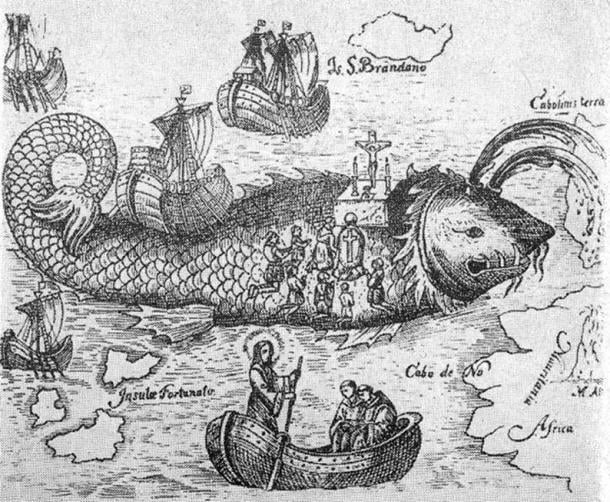
A woodcut which shows the scene from Navigatio Sancti Brendani Abbatis where the saint celebrates a mass on the body of a sea monster. ( Public Domain )
St. Brendan’s Ordination
St. Brendan is recorded to have been born in 484 AD, in Ciarraighe Luachra, near Tralee, a port town in the southwestern Irish county of County Kerry, which is part of the province of Munster. The records also indicate that the future saint was baptized by Saint Erc, another Irish saint, at Tubrid, near Ardfert. After a year with his parents, the child Brendan was sent to the home of a local chieftain, Airde mac Fidaigh at Cathair Airde in Listrim, about 5 km (3.11 miles) to the east of his home. At the end of his fifth year, St. Brendan returned to his family, and continued his studies under Saint Erc. In 510 AD, the saint was ordained a priest by his teacher (another source provides 512 AD as the year in which the saint was ordained).
- True Remains of the Saint Behind the Santa Myth Believed Found in Turkey
- The Immortal Count of Saint Germaine: Ascended Master of Ancient Wisdom
- Viva La Muerte! Santa Muerte, Folk Saint and Holy Personification of Death, Healer and Protector
In the following years, Saint Brendan traveled around the British Isles, spreading Christianity, and founding monastic communities. Some of the monasteries he founded included the ones at Clonfert, in County Galway (which is his largest and most celebrated), at Inis-da-druim (present day Coney Island), in County Clare, and at Shanakeel (known also as Baalynevinoorach), located at the foot of Brandon Hill in County Kerry. Additionally, St. Brendan is also remembered as a voyager thanks to the account of his fantastic voyage in search of the Island of Paradise.
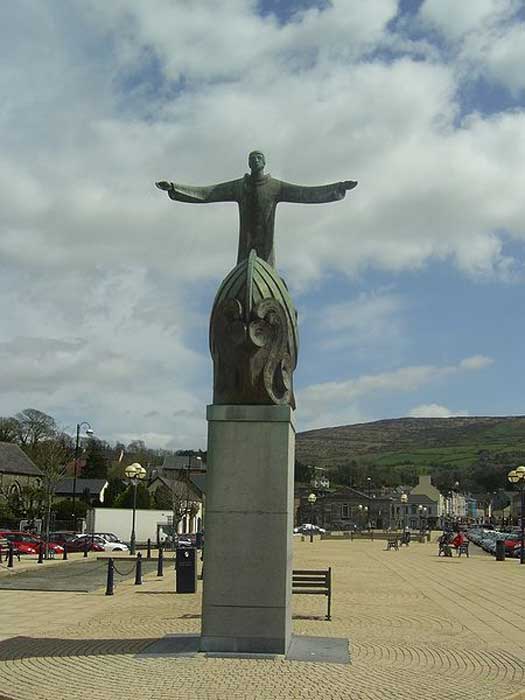
Sculpture of St Brendan, The Square Bantry, County Cork. ( Public Domain )
St. Brendan’s Encounter with a Sea Monster
An account of St. Brendan’s journey to the Island of Paradise may be found in a text known as the ‘ Navigatio Sancti Brendani Abbatis ’, which was written down around the 9th century AD. Several variations are available, which has resulted in some differences in the details of the story. For example, St. Brendan is recorded to have not undertaken the voyage alone, but accompanied by a group of his fellow monks. The number of his companions, however, varies according to the sources, ranging from as few as 14 to as many as 60. In any case, the monks’ voyage took seven years to complete, during which they encountered a number of incredible adventures.
One of these, for example, is the monks’ encounter with the sea monster Jasconius. This tale is said to be the most commonly illustrated adventure of St. Brendan. In the tale, the monks mistake the monster as an island, due to its immense size, and went onto its back. They only realized that their island was in fact a living creature when they made their campfire, as it woke the sea monster up. In one version of the tale, the monks encountered a sea monster that sought to devour them instead. The saint prayed to God for deliverance, and another sea monster emerged from the water to slay the first monster.
- Saint Augustine of Hippo and His Detours on the Long and Winding Path to Christianity
- The Historical Count of Saint-Germaine: Elusive, Enigmatic and Eternal
- When Millions Were Dropping Dead From the Plague, The 14 Holy Helpers Were Summoned to Intercede
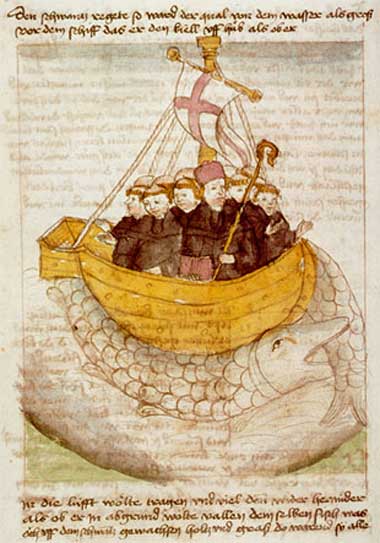
Saint Brendan and the whale from a 15th-century manuscript. ( Public Domain )
Did Saint Brendan Reach the New World?
The voyage of Saint Brendan has led some to argue that it was this Irish saint, rather than the Vikings or Christopher Columbus, who was the first European to have reached the New World. One of the people who sought to determine the veracity of this claim was Tim Severin, a British explorer.
In 1976, Severin built a traditional ship using the design, materials, and techniques that the monks would have used. The explorer successfully sailed from Ireland to North America. Whilst this does not necessarily mean that St. Brendan was the first European to reach the New World, it does demonstrate that the voyage undertaken by the saint was entirely possible.
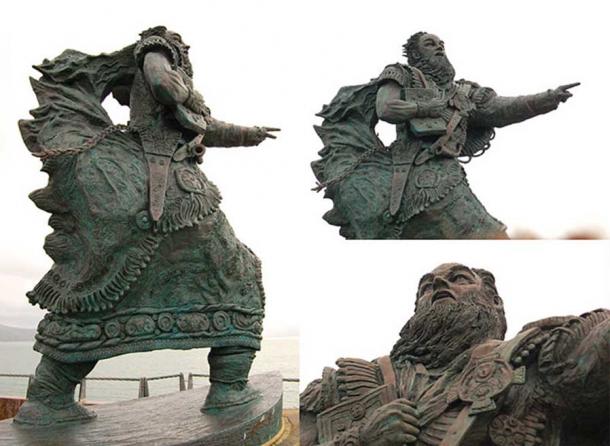
Statue of Brendan at Fenit Harbour. ( CC BY SA 3.0 )
Top image: Exhibit in the Chazen Museum of Art, University of Wisconsin-Madison, Madison, Wisconsin, USA. Source: Public Domain
By Wu Mingren
Anon., The Voyage of St Brendan the Abbot [Online]
[O’Donoghue, D. (trans.) 1893. The Voyage of St Brendan the Abbot .] Available at: http://markjberry.blogs.com/StBrendan.pdf
Grattan-Flood, W. & Hartig, O., 1907. St. Brendan. [Online] Available at: http://www.newadvent.org/cathen/02758c.htm
Haggerty, B., 2011. St. Brendan,The Navigator. [Online] Available at: http://www.irishcultureandcustoms.com/ASaints/BrendanNav.html
Howley, A., 2013. Did St. Brendan Reach North America 500 Years Before the Vikings?. [Online] Available at: https://voices.nationalgeographic.org/2013/05/16/did-st-brendan-reach-north-america-500-years-before-the-vikings/
Newfoundland and Labrador Heritage, 2017. Irish Monks and the Voyage of St. Brendan. [Online] Available at: http://www.heritage.nf.ca/articles/exploration/st-brendan-voyage.php
www.saint-brendan.org , 2010. Saint Brendan The Navigator. [Online] Available at: http://www.saint-brendan.org/index.asp
seems there comes a time when many people so called discovered america even thousands of years ago

Wu Mingren (‘Dhwty’) has a Bachelor of Arts in Ancient History and Archaeology. Although his primary interest is in the ancient civilizations of the Near East, he is also interested in other geographical regions, as well as other time periods.... Read More
Related Articles on Ancient-Origins
St Brendan The Navigator

St Brendan of Clonfert or in Irish; Naomh Breandán, is known as "the Navigator", "the Voyager", or "the Bold" and is one of the early Irish monastic saints and was one of the Twelve Apostles of Ireland .
He is chiefly renowned for his legendary quest to the "Isle of the Blessed," also called St. Brendan's Island which is known as the Voyage of St. Brendan.
Saint Brendan's feast day is celebrated on May 16th in the Eastern Orthodox Church, Roman Catholic Church and within the Anglican Communion.
St Brendan's early life
He was baptized at Tubrid, near Ardfert, by Saint Erc. For five years he was educated under the care Saint Ita, who is known as "the Brigid of Munster", and he then went on to complete his studies under Saint Erc, who ordained him as a priest in the year 512.
Between the years 512 and 530 St Brendan built monastic sites at Ardfert at the foot of Mount Brandon. After these years he is supposed to have set out on his famous seven-year voyage for Paradise.
The old Irish Calendars assigned a special feast for the "Egressio familiae S. Brendani", on March 22nd; and St Aengus the Culdee, in his Litany composed at the close of the eighth century, called upon "the sixty who accompanied St. Brendan in his quest for the Land of Promise".
The Voyage of St Brendan the Navigator
Many versions of this story exist, passed down through the centuries, which tell of how he set out onto the Atlantic Ocean with sixty pilgrims, however, some other versions have fourteen pilgrims, plus three unbelievers who join at the last minute. The purpose of their voyage was to search for the Garden of Eden.
One of these companions is said to have been Saint Malo.
If the voyage did take place, it would have occurred sometime between 512-530 AD, before Brendan traveled to the island of Great Britain.
He is said to have also encountered a sea monster, an adventure he shared with his contemporary St. Columba . This most commonly illustrated adventure is his landing on an island which turns out to be a giant sea monster called Jasconius or Jascon. This too, has its parallels in other stories, not only in Irish mythology but in other traditions, from Sinbad the Sailor to Pinocchio.
Later life of St Brendan
Later in his life, Brendan traveled to Wales and the holy island of Iona, where St Columba spent his exile from Ireland. It is situated off the west coast of Scotland.
On returning to Ireland, he founded a monastery at Annaghdown, where he spent the rest of his days.
St Brendan's Legacy
Saint Brendan is featured as well known inspiration in popular culture also, such as; "The Brendan Voyage", which is an orchestral suite for the Uilleann pipes , written by Irish composer Shaun Davey in 1983 and based on Tim Severin's book of the same name.
Novelist Frederick Buechner retold the story of Brendan's travels in his 1987 novel, "Brendan".
The Celtic band, "Iona", made an entire recording inspired by the voyage of Saint Brendan called, "Beyond These Shores", now available as part of the recording, "The River Flows".
Singer-songwriter, Sarana Verlin, wrote an instrumental song titled, "St. Brendan's Reel", that appears on several albums including, "Amadon Crest".
In the 2005 film, "Beowulf & Grendel", a traveling monk named Brendan the Celt sails to Denmark circa 521 A.D.
The cream liqueur "Saint Brendan's", which is a whiskey-based drink and has a factory in Derry, is named after him.
Further reading
- Saint Brendan of Clonfert - wikipedia.org
- Saint Brendan the Navigator - saints.sqpn.com
- The Voyage of Beyond the Sea - forteantimes.com
- Voyage of St. Brendan - newadvent.org
- Brendan's Fabulous Voyage - John Patrick Crichton Stuart Bute - gutenberg.org
Related History Articles

The Anglo-Irish Agreement: A Brief History and Overview
In 1985, the British and Irish governments signed the Anglo-Irish Agreement, a landmark accord aimed at addressing the political conflict...

Ireland Joins The European Union (EU)
Ireland's journey to the European Union (EU) was not straightforward, but it culminated in the country joining the bloc in 1973. Ireland's...
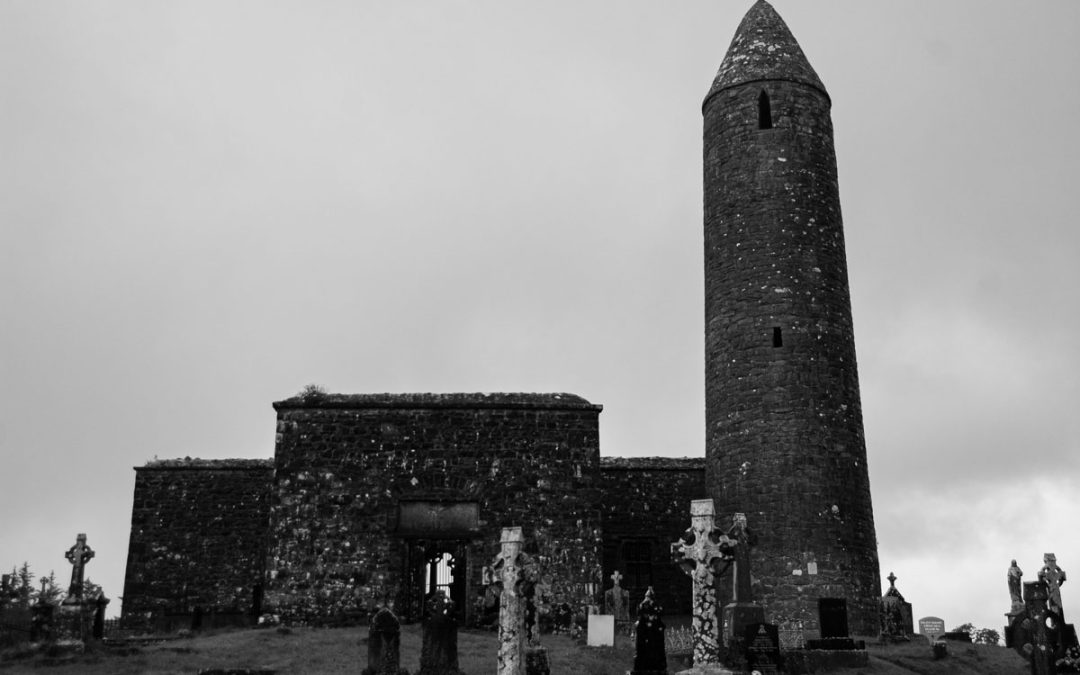
Exploring the Enigmatic Roundtowers of Ireland
Roundtowers are a distinct architectural feature of Ireland, and their origins and purpose have fascinated scholars and historians for...
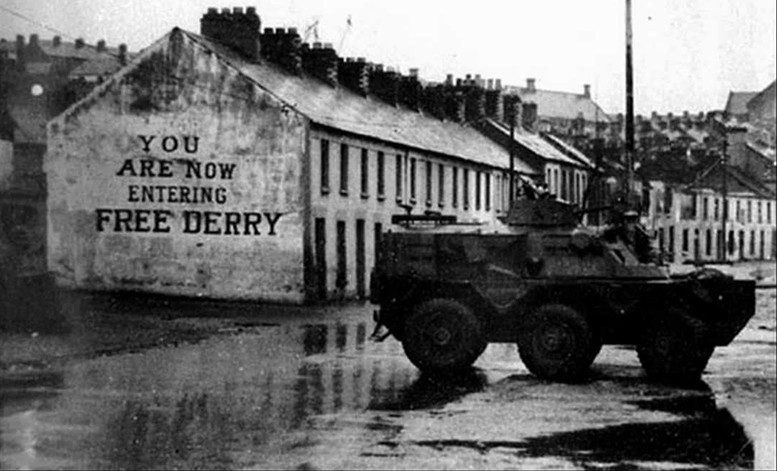
Operation Motorman of 1972
In the early morning of 31 July 1972, the British army initiated Operation Motorman in response to Bloody Friday, a series of bombs that...

Browse by tag!
1916 Battles Celtic Christianity Clans Executions Heritage Musicians Mythology Northern Ireland Pagan People Politics Rebellions Recipe Rituals Settlers Stories Traditional War
- Daily Reading for Thursday, October ...
- Today's Reading
- The Mysteries of the Rosary
St. Brendan
- Catholic Online
- Catholic Encyclopedia
- Encyclopedia Volume
St. Brendan of Ardfert and Clonfert, known also as Brendan the Voyager, was born in Ciarraighe Luachra, near the present city of Tralee, County Kerry, Ireland, in 484; he died at Enachduin, now Annaghdown, in 577. He was baptized at Tubrid, near Ardfert, by Bishop Erc. For five years he was educated under St. Ita, "the Brigid of Munster", and he completed his studies under St. Erc, who ordained him priest in 512. Between the years 512 and 530 St. Brendan built monastic cells at Ardfert, and at Shanakeel or Baalynevinoorach, at the foot of Brandon Hill. It was from here that he set out on his famous voyage for the Land of Delight. The old Irish Calendars assigned a special feast for the "Egressio familiae S. Brendani", on 22 March; and St Aengus the Culdee, in his Litany, at the close of the eighth century, invokes "the sixty who accompanied St. Brendan in his quest of the Land of Promise". Naturally, the story of the seven years' voyage was carried about, and, soon, crowds of pilgrims and students flocked to Ardfert. Thus, in a few years, many religious houses were formed at Gallerus, Kilmalchedor, Brandon Hill, and the Blasquet Islands, in order to meet the wants of those who came for spiritual guidance to St. Brendan.

Memorial Day Sale 15% off
Having established the See of Ardfert, St. Brendan proceeded to Thomond, and founded a monastery at Inis-da-druim (now Coney Island, County Clare), in the present parish of Killadysert, about the year 550. He then journeyed to Wales, and thence to Iona, and left traces of his apostolic zeal at Kilbrandon (near Oban) and Kilbrennan Sound. After a three years' mission in Britain he returned to Ireland, and did much good work in various parts of Leinster, especially at Dysart (Co. Kilkenny), Killiney (Tubberboe), and Brandon Hill. He founded the Sees of Ardfert, and of Annaghdown, and established churches at Inchiquin, County Galway, and at Inishglora, County Mayo. His most celebrated foundation was Clonfert, in 557, over which he appointed St. Moinenn as Prior and Head Master. St. Brendan was interred in Clonfert, and his feast is kept on 16 May.
St. Brendan belongs to that glorious period in the history of Ireland when the island in the first glow of its conversion to Christianity sent forth its earliest messengers of the Faith to the continent and to the regions of the sea. It is, therefore, perhaps possible that the legends, current in the ninth and committed to writing in the eleventh century, have for foundation an actual sea-voyage the destination of which cannot however be determined. These adventures were called the "Navigatio Brendani", the Voyage or Wandering of St. Brendan, but there is no historical proof of this journey. Brendan is said to have sailed in search of a fabled Paradise with a company of monks, the number of which is variously stated as from 18 to 150. After a long voyage of seven years they reached the "Terra Repromissionis", or Paradise, a most beautiful land with luxuriant vegetation. The narrative offers a wide range for the interpretation of the geographical position of this land and with it of the scene of the legend of St. Brendan. On the Catalonian chart (1375) it is placed not very far west of the southern part of Ireland. On other charts, however, it is identified with the "Fortunate Isles" of the ancients and is placed towards the south. Thus it is put among the Canary Islands on the Herford chart of the world (beginning of the fourteenth century); it is substituted for the island of Madeira on the chart of the Pizzigani (1367), on the Weimar chart (1424), and on the chart of Beccario (1435). As the increase in knowledge of this region proved the former belief to be false the island was pushed further out into the ocean. It is found 60 degrees west of the first meridian and very near the equator on Martin Behaim's globe. The inhabitants of Ferro, Gomera, Madeira, and the Azores positively declared to Columbus that they had often seen the island and continued to make the assertion up to a far later period. At the end of the sixteenth century the failure to find the island led the cartographers Apianus and Ortelius to place it once more in the ocean west of Ireland ; finally, in the early part of the nineteenth century belief in the existence of the island was completely abandoned. But soon a new theory arose, maintained by those scholars who claim for the Irish the glory of discovering America, namely, MacCarthy, Rafn, Beamish, O'Hanlon, Beauvois, Gafarel, etc. They rest this claim on the account of the Northmen who found a region south of Vinland and the Chesapeake Bay called "Hvitramamaland" (Land of the White Men) or "Irland ed mikla" (Greater Ireland ), and on the tradition of the Shawano (Shawnee) Indians that in earlier times Florida was inhabited by a white tribe which had iron implements. In regard to Brendan himself the point is made that he could only have gained a knowledge of foreign animals and plants, such as are described in the legend, by visiting the western continent. On the other hand, doubt was very early expressed as to the value of the narrative for the history of discovery. Honorius of Augsburg declared that the island had vanished; Vincent of Beauvais denied the authenticity of the entire pilgrimage, and the Bollandists do not recognize it. Among the geographers, Alexander von Humboldt, Peschel, Ruge, and Kretschmer, place the story among geographical legends, which are of interest for the history of civilization but which can lay no claim to serious consideration from the point of view of geography. The oldest account of the legend is in Latin, "Navigatio Sancti Brendani", and belongs to the tenth or eleventh century; the first French translation dates from 1125; since the thirteenth century the legend has appeared in the literatures of the Netherlands, Germany, and England. A list of the numerous manuscripts is given by Hardy, "Descriptive Catalogue of Materials Relating to the History of Great Britain and Ireland" (London, 1862), I, 159 sqq. Editions have been issued by : Jubinal, "La Legende latine de S. Brandaines avec une traduction inedite en prose et en poésie romanes" (Paris, 1836); Wright, "St. Brandan, a Medieval Legend of the Sea, in English Verse, and Prose" (London, 1844); C. Schroder, "Sanct Brandan, ein latinischer und drei deutsche Texte" (Erlangen, 1871); Brill, "Van Sinte Brandane" (Gronningen, 1871); Francisque Michel, "Les Voyages merveilleux de Saint Brandan a la recherche du paradis terrestre" (Paris, 1878); Fr. Novati, "La Navigatio Sancti Brandani in antico Veneziano" (Bergamo, 1892); E. Bonebakker, "Van Sente Brandane" (Amsterdam, 1894); Carl Wahland gives a list of the rich literature on the subject and the old French prose translation of Brendan's voyage (Upsala, 1900), XXXVI-XC.

Want New Prayers?
Browse by catholic encyclopedia alphabet.

Auction Alert, Place Bid Now
Join the movement when you sign up below, you don't just join an email list - you're joining an entire movement for free world class catholic education..

- Mysteries of the Rosary Mysteries of the Rosary
- St. Faustina Kowalska St. Faustina Kowalska
- Litany of the Blessed Virgin Mary Litany of the Blessed Virgin Mary
- Saint of the Day for Wednesday, Oct 4th, 2023 Saint of the Day for ...
- Popular Saints Popular Saints
- St. Francis of Assisi St. Francis of Assisi
- Bible Bible
- Female / Women Saints Female / Women Saints
- 7 Morning Prayers you need to get your day started with God 7 Morning Prayers you need to ...
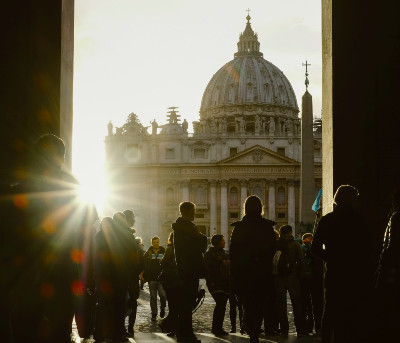
A Message From Us to All Faithful Catholics

So many people are hungry

Why Prayer is Important for Kids
A good beef with catholic education, feast of the visitation of the blessed virgin mary, daily catholic.

- Daily Readings for Wednesday, June 05, 2024
- St. Boniface of Mainz: Saint of the Day for Wednesday, June 05, 2024
- Prayer for Travelers: Prayer of the Day for Thursday, May 09, 2024


Family Savings 20% off Montana Ranch and Cattle
Saints & angels.

- Saints Feast Days
- Female Saints
- Saint of the Day
- Browse Saints
- Popular Saints
- Patron Saints
- Saint Fun Facts
- Martyr Saints
- More Saints & Angels

- Mysteries of the Rosary
- Stations of the Cross
- Guide for Confession
- Prayer of the Day
- Browse Prayers
- Popular Prayers
- Holy Rosary
- Sacraments of the Catholic Church
- More Prayers
- Daily Readings
- New Testament
- Old Testament
- Books of the Bible
- Ten Commandments
More of Catholic Online
- Lent & Easter
- Advent & Christmas
- All of Catholic Online

Free Catholic PDF's - Home / Parish / School / Bulletin Inserts
- Privacy Statement
- Terms of Service
Copyright 2024 Catholic Online. All materials contained on this site, whether written, audible or visual are the exclusive property of Catholic Online and are protected under U.S. and International copyright laws, © Copyright 2024 Catholic Online. Any unauthorized use, without prior written consent of Catholic Online is strictly forbidden and prohibited.
Catholic Online is a Project of Your Catholic Voice Foundation, a Not-for-Profit Corporation. Your Catholic Voice Foundation has been granted a recognition of tax exemption under Section 501(c)(3) of the Internal Revenue Code. Federal Tax Identification Number: 81-0596847. Your gift is tax-deductible as allowed by law.
We ask you, humbly: do not scroll away
To all our readers, please don't scroll past this..

Brendan the Navigator
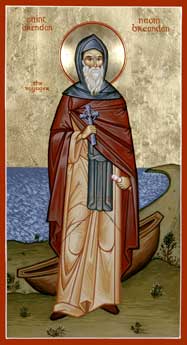
Our venerable and God-bearing father Brendan the Navigator (or the Voyager ) was a sixth-century Irish Orthodox monk . He was perhaps the first Orthodox Christian to set foot on Canadian soil, and as such, is the first of the saints to set foot in North America. He is also known as Brendan of Clonfert . He is remembered by the Church on May 16 .
St Brendan was born around 484 at Tralee in Kerry, Ireland. He founded several monasteries in Ireland, including Cluain Ferta Brenaind (or Clonfert) in County Galway. His missionary and pastoral travels took him on voyages to the Scottish islands, and possibly to Wales. He reposed in peace in 577.
A Latin chronicle of the early ninth century, Navigatio Brendani ( The Voyage of Brendan ), made him the hero of a Christian adventure that included voyages to unknown lands far to the west of Ireland. The account indicates that Irish voyagers visited America as early as the 8th century, before the Vikings; but whether St Brendan himself made these voyages is disputed, based mainly on questions as to whether a curragh, the sea craft on which Brendan sailed, would be able to make such a journey.
In 1976, Irish explorer Tim Severin built an ox leather curragh, a replica of the sort Brendan would have used, and over two summers sailed from Ireland via the Hebrides, Faroe Islands and Iceland to Newfoundland to demonstrate that the saint's purported voyage was feasible. On his voyage, he encountered various sights such as icebergs and sea animals such as whales and porpoises which he suggests are factual counterparts to the fantastic sights from the legends of Brendan. (See The Brendan Voyage , ISBN 0-349-10707-6.)
Troparion ( Tone 4) [1]
Sources and external links
- St. Brendan's Journey & Immigration -Orthodox Canada
- w:Brendan – Wikipedia
- Saints of the British Isles
- Pre-Schism Western Saints
- 6th-century saints
Navigation menu
Personal tools.
- Request account
- View source
- View history
- Featured content
- Browse categories
- Recent changes
- Random page
interaction
- Community portal
- Trapeza (Discussion)
- What links here
- Related changes
- Upload file
- Special pages
- Printable version
- Permanent link
- Page information
- Cite this page
In other languages
- This page was last edited on October 22, 2012, at 19:00.
- This page has been accessed 64,848 times.
- Copyright Information
- Privacy policy
- About OrthodoxWiki
- Disclaimers
- Mobile view
The Brendan Voyage
- Post author By Simon King
- Post date July 24, 2020
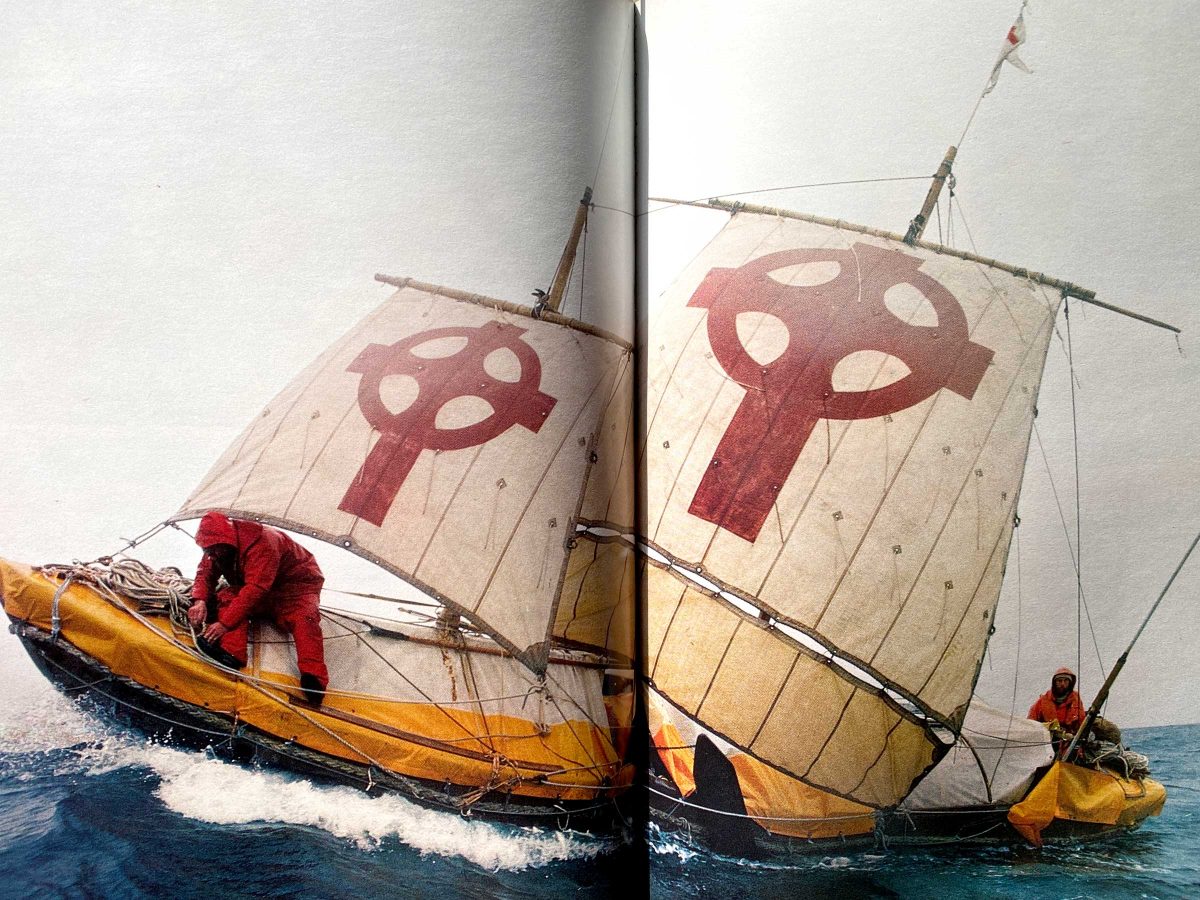
You could say that Tim Severin is a historical re-enactor, but that would conjure all the wrong images, of renaissance fairs and Colonial Williamsburg. At nearly 80 years old, his accomplishments are better described as experiential archaeology , recreating legendary journeys to prove they could have happened. His historical adventures are based on years of upfront study, working with scholars to decipher ancient texts and find period-appropriate technology and materials. I only recently learned about Severin’s work, through his 1978 book that documents a fascinating early project called The Brendan Voyage .
In the 6th-century, an Irish monk named St. Brendan wrote the Navigatio Sancti Brendani Abbatis (The Voyage of St. Brendan the Abbot), a document describing a westward sea journey to the “promised land” that some believe was North America. The journey included numerous stops at islands along the way, and he described seeing fantastic sights and creatures from aboard his medieval “skin boat.” Although some scholars interpret the monk’s manuscript figuratively, others subscribe to the belief that it is more travelogue than fable. That question is at the heart of The Brendan Voyage , Severin’s project to recreate St. Brendan’s journey and prove that a leather-clad sailboat could successfully traverse the North Atlantic.
“Of course, if the claim was true, then Saint Brendan would have reached America almost a thousand years before Columbus and four hundred years before the Vikings.” The Brendan Voyage by Tim Severin, Chapter 1
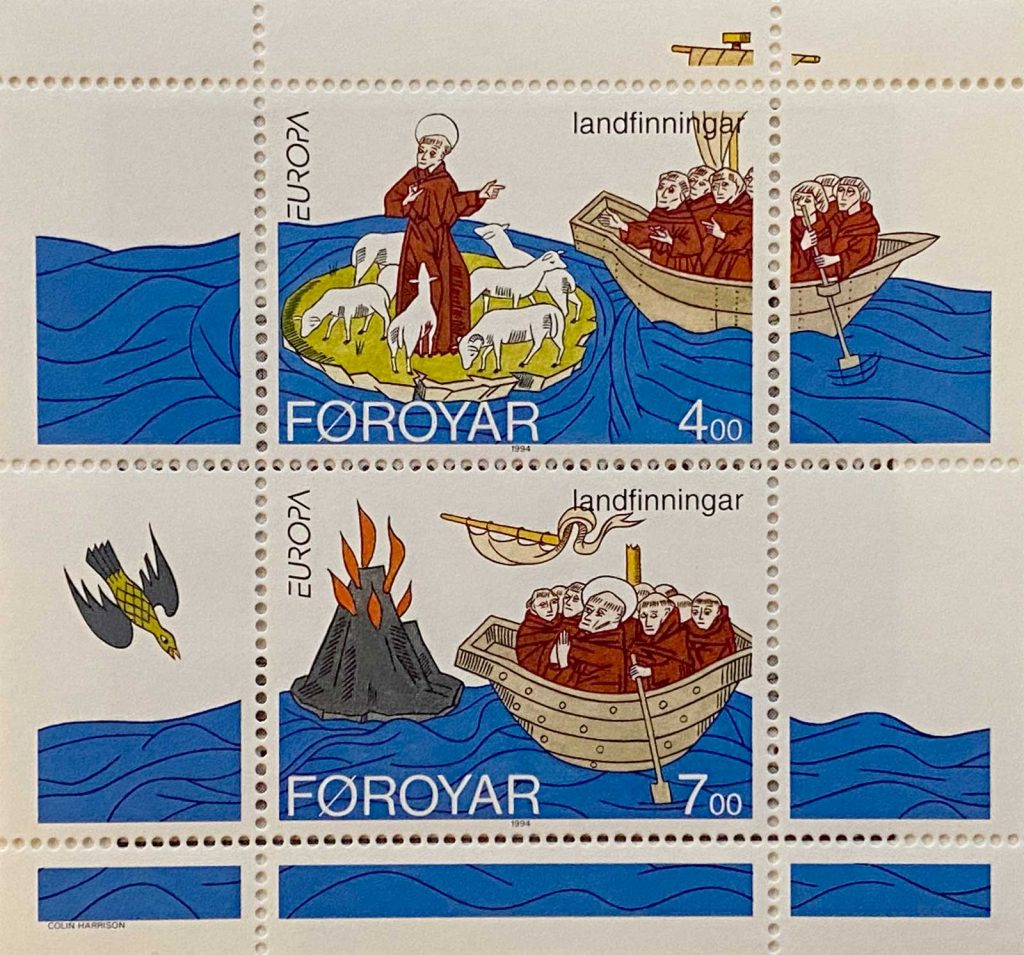
Severin’s first task, which took years of hard work, was the creation of a boat that would match the one used by St. Brendan. In The Brendan Voyage he describes a process of researching, learning, and collaborating with various experts. The energy surrounding the project is contagious, and propelled by what he calls “Brendan Luck” that seems to grace him throughout the project.
The traditional Irish curragh , which is still in use today on the west coast of Ireland, is a descendent of the boat that St. Brendan would have sailed. In modern times, canvas is stretched over the wooden frame, but the Navigatio describes a boat covered with oxhide. This was the first materials challenge for Severin, and initial tests showed that leather would deteriorate quickly in sea water.
Luckily the text provides additional clues, describing the leather as “tanned in oak bark” and coated in “grease” to make it water proof. After numerous lab studies it was proven that, indeed, oak bark was the best leather treatment. Severin found a single tannery in Britain that could help, run by the Croggon family in the Cornish town of Grampound. They had been using traditional tanning techniques since they opened in 1711, and as Brendan Luck would have it, they were enthusiastic about the project.
“So began a delightful period of work. The British leather industry took the Brendan project to heart, and what splendid people the leathermakers turned out to be.” The Brendan Voyage by Tim Severin, Chapter 2
The manuscript describes applying “grease” to the leather, and even mentions bringing extra grease on the journey for re-application. These kinds of details further convinced Severin that he was reading the documentation of a real trip. It’s easy to determine that this must have been lanolin or “wool grease,” a wax that secreted by sheep. Severin and his crew applied it liberally to the oak bark leather and described the resulting stench as nearly unbearable.
“I wonder if you could supply me with some wool grease.” “Yes, of course. How much do you want?” “About three-quarters of a ton, please.” There was stunned silence. The Brendan Voyage by Tim Severin, Chapter 2
The remaining challenges of building Brenden , a 36-foot medieval boat were numerous and back breaking. Just the right cuts of oak and ash were found to build the mast and hull—apparently the north side of the tree is the strongest. Joints were lashed together with miles of leather stripping, and 49 overlapping ox hides were stitched together with flax cords. Brendan Luck struck again when Severin learned that John O’Connell, a master harness maker, lived nearby where the boat was being built. He joined the project and taught Severin and a team of volunteers how to stitch the thick leather. Once on the ocean their lives would depend on the quality of every stitch and knot, a reality that hung heavy over the slow and strenuous work.
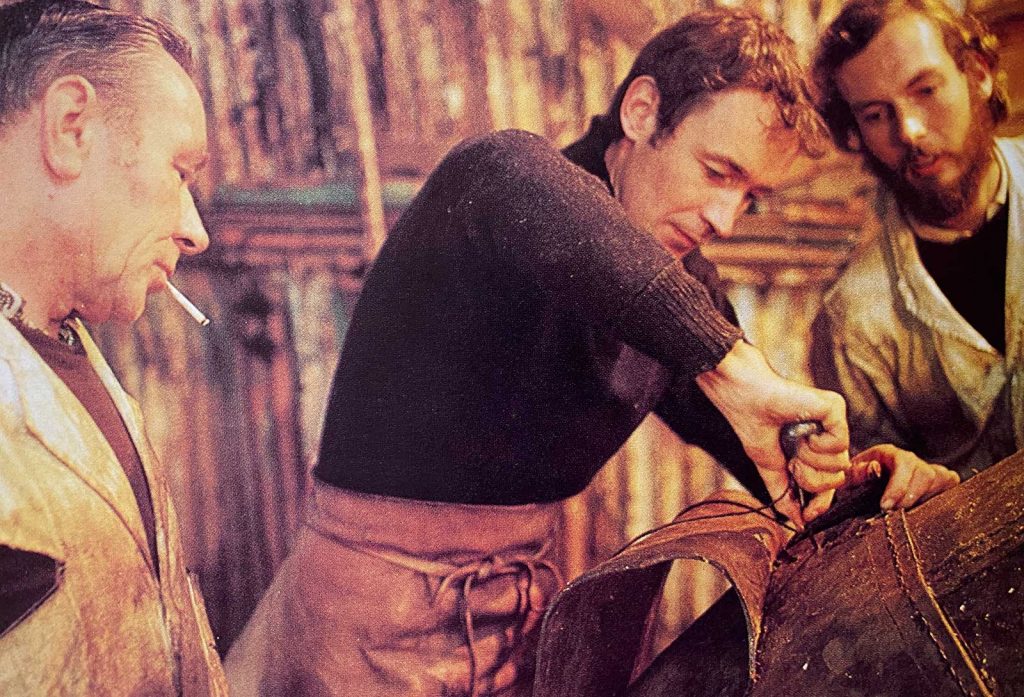
For more detail on the boat’s construction I suggest checking out the article Across the Atlantic in a Leather Boat , which includes relevant excepts from the book and broader information on traditional skin boats in other parts of the world.
StarTribune
Brendan robert tupa.
Published on June 2, 2024
Star Tribune reviews all guest book entries to ensure appropriate content.
Our staff does not correct grammar or spelling. FAQ
© 2024 StarTribune. All rights reserved.
Print Obituary
Do you want to include the guest book.
Boeing's Starliner launches its 1st astronaut-crewed flight after several delays
The crew aboard Starliner is planning to spend a week aboard the ISS.
Boeing’s Starliner capsule launched Wednesday its first astronaut-crewed flight into space to the International Space Station (ISS) after several delays.
The liftoff occurred at 10:52 a.m. ET from the Cape Canaveral Space Force Station in Cape Canaveral, Florida.
Weather was 90% favorable to launch. Derrol Nail of NASA Communications said during a livestream that the team had been keeping an eye on the cumulus cloud forecast because if the rocket flies through cumulus clouds, it could create its own lightning strike.
MORE: Boeing Starliner's first astronaut-crewed flight launch called off due to stuck valve
About 15 minutes after the launch, the rocket separated from the spacecraft, allowing Starliner to fly on its own. At 11:24 a.m. ET, Boeing Space said Starliner had successfully reached stable orbit .
Starliner is designed to carry a seven-person crew, but aboard the "test drive" launch are NASA astronauts Barry “Butch” Wilmore, 61, a former U.S. Navy captain who will be commanding the flight, and Sunita Williams, 58, a former Navy service member who will be piloting the flight.

A team from United Launch Alliance (ULA), which manufactures and operates the rockets that launch spacecraft into orbit, began loading cryogenic propellant into the rocket before the planned liftoff early this morning in a sign of launch being all set to go.
Wilmore and Williams entered the capsule around 8:00 a.m. ET, taking their seats and performing a series of checks including communications checks and suit checks, according to a post on X from Boeing Space.
This flight will be Wilmore's third mission to the ISS, NASA said during its Wednesday livestream. Williams is also on her third flight to space and will be the first woman on a test flight in an orbital spacecraft, according to NASA.
After Starliner launches into orbit, it will be about a 24-hour journey to the ISS, during which the crew will test several flight objects, such as checking equipment, according to NASA .
Boeing Space said Wilmore and Williams will pilot Starline manually at certain points to prove it can, despite the spacecraft being able to operate autonomously.
MORE: NASA's Voyager 1 sending readable data back to Earth for 1st time in 5 months
Williams and Wilmore are expected to spend one week aboard the ISS and will be evaluating the spacecraft and its systems. Upon re-entry, the spacecraft will deploy parachutes and an airbag system, landing the pair in the western U.S.
Popular Reads

How Trump’s conviction will impact the election
- May 30, 5:23 PM

Woman who started breathing at funeral home dies
- Jun 4, 12:35 PM

What Americans think of Trump's verdict: POLL
- Jun 2, 9:01 AM
It comes after the launch of Starliner was delayed several times. The crewed flight test was tentatively scheduled for May 6, but was scrubbed after a problem with an oxygen valve on the ULA rocket.
A new launch date had been set for May 25, but a small helium leak was discovered in the service module, which contains support systems and instruments for operating a spacecraft.
Another launch set for June 2 was scrubbed minutes before it was due to begin "due to the computer ground launch sequencer not loading into the correct operational configuration after proceeding into terminal count."

If the mission is successful, NASA could certify the spacecraft to perform routine missions to and from the ISS. NASA has primarily been using SpaceX's Dragon spacecraft to transport crew and cargo to the ISS.
The missions are part of the larger Commercial Crew Program at NASA, which uses American rockets and spacecraft to launch astronauts and cargo to the ISS with the hope of helping the federal space agency prepare for its upcoming moon and Mars missions.
ABC News' Gina Sunseri and Leah Sarnoff contributed to this report.
Related Topics

Key voting groups' thoughts on Trump conviction
- Jun 3, 5:06 PM

Sandy Hook families ask judge to liquidate company
- Jun 3, 11:44 AM
ABC News Live
24/7 coverage of breaking news and live events

Brendan, Saint
Known also as brendan the voyager (d. 577).
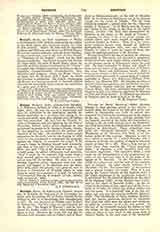
Brendan , Saint, of Ardfert and Clonfert, known also as Brendan the Voyager, b. in Ciarraighe Luachra, near the present city of Tralee, County Kerry, Ireland , in 484; d. at Enachduin, now Annaghdown, in 577. He was baptized at Tubrid, near Ardfert, by Bishop Erc. For five years he was educated under St. Ita, “the Brigid of Munster “, and he completed his studies under St. Erc, who ordained him priest in 512. Between the years 512 and 530 St. Brendan built monastic cells at Ardfert, and at Shanakeel or Ballynevinoorach, at the foot of Brandon Hill. It was from here that he set out on his famous voyage for the Land of Delight. The old Irish Calendars assigned a special feast for the “Egressio familiae S. Brendani”, on March 22; and St. Aengus the Culdee, in his Litany , at the close of the eighth century, invokes “the sixty who accompanied St. Brendan in his quest of the Land of Promise”. Naturally, the story of the seven years’ voyage was carried about, and, soon, crowds of pilgrims and students flocked to Ardfert. Thus, in a few years, many religious houses were formed at Gallerus, Kilmalchedor, Brandon Hill, and the Blasquet Islands, in order to meet the wants of those who came for spiritual guidance to St. Brendan.
Having established the See of Ardfert, St. Brendan proceeded to Thomond, and founded a monastery at Inis-da-druim (now Coney Island, County Clare), in the present parish of Killadysert, about the year 550. He then journeyed to Wales , and thence to Iona, and left traces of his apostolic zeal at Kilbrandon (near Oban) and Kilbrennan Sound. After a three years’ mission in Britain he returned to Ireland , and did much good work in various parts of Leinster, especially at Dysart (Co. Kilkenny), Killiney (Tubberboe), and Brandon Hill. He founded the Sees of Ardfert, and of Annaghdown, and established churches at Inchiquin, County Galway, and at Inishglora, County Mayo. His most celebrated foundation was Clonfert, in 557, over which he appointed St. Moinenn as Prior and Head Master. St. Brendan was interred in Clonfert, and his feast is kept on May 16.
VOYAGE OF SAINT BRENDAN .—Saint Brendan belongs to that glorious period in the history of Ireland when the island in the first glow of its conversion to Christianity sent forth its earliest messengers of the Faith to the continent and to the regions of the sea. It is, therefore, perhaps possible that the legends, current in the ninth and committed to writing in the eleventh century, have for foundation an actual sea-voyage the destination of which cannot however be determined. These adventures were called the “Navigatio Brendani”, the Voyage or Wandering of St. Brendan, but there is no historical proof of this journey. Brendan is said to have sailed in search of a fabled Paradise with a company of monks, the number of which is variously stated as from 18 to 150. After a long voyage of seven years they reached the “Terra Repromissionis”, or Paradise, a most beautiful land with luxuriant vegetation. The narrative offers a wide range for the interpretation of the geographical position of this land and with it of the scene of the legend of St. Brendan. On the Catalonian chart (1375) it is placed not very far west of the southern part of Ireland . On other charts, however, it is identified with the “Fortunate Isles” of the ancients and is placed towards the south. Thus it is put among the Canary Islands on the Herford chart of the world (beginning of the fourteenth century); it is substituted for the island of Madeira on the chart of the Pizzigani (1367), on the Weimar chart (1424), and on the chart of Beccario (1435). As the increase in knowledge of this region proved the former belief to be false the island was pushed further out into the ocean. It is found 60° west of the first meridian and very near the equator on Martin Behaim ‘s globe. The inhabitants of Ferro, Gomera, Madeira, and the Azores positively declared to Columbus that they had often seen the island and continued to make the assertion up to a far later period. At the end of the sixteenth century the failure to find the island led the cartographers Apianus and Ortelius to place it once more in the ocean west of Ireland ; finally, in the early part of the nineteenth century belief in the existence of the island was completely abandoned. But soon a new theory arose, maintained by those scholars who claim for the Irish the glory of discovering America , namely, Mac-Carthy, Rafn, Beamish, O’Hanlon, Beauvois, Gaffarel, etc. They rest this claim on the account of the Northmen who found a region south of Vinland and the Chesapeake Bay called “Hvitramamaland” (Land of the White Men) or “Irland ed mikla” (Greater Ireland ), and on the tradition of the Shawano (Shawnee) Indians that in earlier times Florida was inhabited by a white tribe which had iron implements. In regard to Brendan himself the point is made that he could only have gained a knowledge of foreign animals and plants, such as are described in the legend, by visiting the western continent. On the other hand, doubt was very early expressed as to the value of the narrative for the history of discovery. Honorius of Augsburg declared that the island had vanished; Vincent of Beauvais denied the authenticity of the entire pilgrimage, and the Bollandists do not recognize it. Among the geographers, Alexander von Humboldt, Peschel, Ruge, and Kretschmer, place the story among geographical legends, which are of interest for the history of civilization but which can lay no claim to serious consideration from the point of view of geography. The oldest account of the legend is in Latin, “Navigatio Sancti Brendani”, and belongs to the tenth or eleventh century; the first French translation dates from 1125; since the thirteenth century the legend has appeared in the literatures of the Netherlands , Germany , and England . A list of the numerous manuscripts is given by Hardy, “Descriptive Catalogue of Materials Relating to the History of Great Britain and Ireland ” ( London , 1862), I, 159 sqq. Editions have been issued by: Jubinal, “La Legende latine de S. Brandaines avec une traduction inedite en prose et en poesie romanes” ( Paris , 1836); Wright, “St. Brandan, a Medieval Legend of the Sea, in English Verse, and Prose” ( London , 1844); C. Schroder, “Sanct Brandan, ein latinischer and drei deutsche Texte” (Erlangen, 1871); Brill, “Van Sinte Brandane” (Gronningen, 1871); Francisque Michel, “Les Voyages merveilleux de Saint Brandan a la recherche du paradis terrestre” ( Paris , 1878); Fr. Novati, “La Navigatio Sancti Brandani in antico Veneziano” (Bergamo, 1892); E. Bonebakker, “Van Sente Brandane” ( Amsterdam , 1894); Carl Wahland gives a list of the rich literature on the subject and the old French prose translation of Brendan’s voyage (Upsala, 1900), XXXVI—XC.
OTTO HABTIG

- Bahasa Indonesia
- Eastern Europe
- Moscow Oblast
Elektrostal
Elektrostal Localisation : Country Russia , Oblast Moscow Oblast . Available Information : Geographical coordinates , Population, Area, Altitude, Weather and Hotel . Nearby cities and villages : Noginsk , Pavlovsky Posad and Staraya Kupavna .
Information
Find all the information of Elektrostal or click on the section of your choice in the left menu.
- Update data
Elektrostal Demography
Information on the people and the population of Elektrostal.
Elektrostal Geography
Geographic Information regarding City of Elektrostal .
Elektrostal Distance
Distance (in kilometers) between Elektrostal and the biggest cities of Russia.
Elektrostal Map
Locate simply the city of Elektrostal through the card, map and satellite image of the city.
Elektrostal Nearby cities and villages
Elektrostal weather.
Weather forecast for the next coming days and current time of Elektrostal.
Elektrostal Sunrise and sunset
Find below the times of sunrise and sunset calculated 7 days to Elektrostal.
Elektrostal Hotel
Our team has selected for you a list of hotel in Elektrostal classified by value for money. Book your hotel room at the best price.
Elektrostal Nearby
Below is a list of activities and point of interest in Elektrostal and its surroundings.
Elektrostal Page

- Information /Russian-Federation--Moscow-Oblast--Elektrostal#info
- Demography /Russian-Federation--Moscow-Oblast--Elektrostal#demo
- Geography /Russian-Federation--Moscow-Oblast--Elektrostal#geo
- Distance /Russian-Federation--Moscow-Oblast--Elektrostal#dist1
- Map /Russian-Federation--Moscow-Oblast--Elektrostal#map
- Nearby cities and villages /Russian-Federation--Moscow-Oblast--Elektrostal#dist2
- Weather /Russian-Federation--Moscow-Oblast--Elektrostal#weather
- Sunrise and sunset /Russian-Federation--Moscow-Oblast--Elektrostal#sun
- Hotel /Russian-Federation--Moscow-Oblast--Elektrostal#hotel
- Nearby /Russian-Federation--Moscow-Oblast--Elektrostal#around
- Page /Russian-Federation--Moscow-Oblast--Elektrostal#page
- Terms of Use
- Copyright © 2024 DB-City - All rights reserved
- Change Ad Consent Do not sell my data
Time in Elektrostal , Moscow Oblast, Russia now
- Tokyo 01:16AM
- Beijing 12:16AM
- Kyiv 07:16PM
- Paris 06:16PM
- London 05:16PM
- New York 12:16PM
- Los Angeles 09:16AM
Time zone info for Elektrostal
- The time in Elektrostal is 8 hours ahead of the time in New York when New York is on standard time, and 7 hours ahead of the time in New York when New York is on daylight saving time.
- Elektrostal does not change between summer time and winter time.
- The IANA time zone identifier for Elektrostal is Europe/Moscow.
Time difference from Elektrostal
Sunrise, sunset, day length and solar time for elektrostal.
- Sunrise: 03:43AM
- Sunset: 09:07PM
- Day length: 17h 24m
- Solar noon: 12:25PM
- The current local time in Elektrostal is 25 minutes ahead of apparent solar time.
Elektrostal on the map
- Location: Moscow Oblast, Russia
- Latitude: 55.79. Longitude: 38.46
- Population: 144,000
Best restaurants in Elektrostal
- #1 Tolsty medved - Steakhouses food
- #2 Ermitazh - European and japanese food
- #3 Pechka - European and french food
Find best places to eat in Elektrostal
- Best dinner restaurants in Elektrostal
- Best fast food restaurants in Elektrostal
- Best vegetarian restaurants in Elektrostal
The 50 largest cities in Russia

COMMENTS
Brendan the Navigator. Brendan of Clonfert (c. AD 484 - c. 577) is one of the early Irish monastic saints and one of the Twelve Apostles of Ireland. He is also referred to as Brendan the Navigator, Brendan the Voyager, Brendan the Anchorite, and Brendan the Bold. The Irish translation of his name is Naomh Bréanainn or Naomh Breandán.
Saint Brendan, Celtic saint, monastic founder, abbot, and hero of legendary voyages in the Atlantic Ocean. According to Navigatio Sancti Brendani Abbatis ('Voyage of St. Brendan the Abbot'), Brendan made an astonishing Atlantic journey with other monks to the so-called Promised Land of the Saints.
published on 06 February 2019. Subscribe to topic. Between the 9th and the 10th century CE, in an unknown European abbey, an anonymous author told the story of an Irish monk and his 14 companions who embarked on a dangerous journey in the 5th century CE. The monk's name was Brendan, and his destination was the Terra repromissionis sanctorum ...
The climax of St. Brendan's voyage was the discovery of the Land of Promise. This land, as described in the Navigatio, was a paradise filled with lush vegetation, abundant flowers, and rich fruits. After spending forty days exploring this land, an angel appeared to Brendan and told him to return to Ireland. The angel informed Brendan that the ...
St. Brendan of Ardfert and Clonfert, known also as Brendan the Voyager, was born in Ciarraighe Luachra, near the present city of Tralee, County Kerry, Ireland, in 484; he died at Enachduin, now Annaghdown, in 577. He was baptized at Tubrid, near Ardfert, by Bishop Erc.
Saint Brendan (also referred to by his various epithets 'the Navigator', 'the Voyager', 'the Anchorite', and 'the Bold') was an Irish saint who lived between the 5th and 6th centuries AD known for his legendary voyage in search of the 'Island of Paradise' or the 'Land of Promise of the Saints'.
Most importantly, they were characterized by a marked inclination to travel to remote lands in order to found new monasteries. St. Columban (543-615), for instance, left Bangor and travelled through the whole forests of Gaul for years, and eventually reached Bobbio in northern Italy. St. Brendan was no different: his destination was, though.
Whether true or not, the story of St. Brendan's voyage captured the medieval imagination and was preserved for centuries. By the time of Christopher Columbus, Saint Brendan's Island already appeared on many maps, although its precise geographical location was a matter of some debate. The legend has even given rise to modern theories that St ...
St Brendan of Clonfert or in Irish; Naomh Breandán, is known as "the Navigator", "the Voyager", or "the Bold" and is one of the early Irish monastic saints and was one of the Twelve Apostles of Ireland.. He is chiefly renowned for his legendary quest to the "Isle of the Blessed," also called St. Brendan's Island which is known as the Voyage of St. Brendan.
St. Brendan of Ardfert and Clonfert, known also as Brendan the Voyager, was born in Ciarraighe Luachra, near the present city of Tralee, County Kerry, Ireland, in 484; he died at Enachduin, now Annaghdown, in 577. He was baptized at Tubrid, near Ardfert, by Bishop Erc. For five years he was educated under St. Ita, "the Brigid of Munster", and ...
This beautiful prayer is attributed to St. Brendan the Navigator (484-577 A.D.), also known as St. Brendan the Voyager, an ancient Irish monk, abbot, sailor, ship-builder, and explorer. He is the patron saint? of mariners, sailors, travelers, and the U.S. Navy. His feast day is May 16th. It is believed by some historians that the holy abbot, eager to spread the Gospel to unknown lands, with ...
Saint Brendan's Epic Voyage Overview. Saint Brendan, a Celtic monk, is sometimes credited as the first European to reach the new world.If the accounts of his travels are accurate, his journey to North America predates Leif Erikson's discovery of Vinland by 400 years and Christopher Columbus's Caribbean voyages by nearly 1,000 years.. We know very little about the life of the historical Brendan.
Brendan the Navigator. Our venerable and God-bearing father Brendan the Navigator (or the Voyager) was a sixth-century Irish Orthodox monk. He was perhaps the first Orthodox Christian to set foot on Canadian soil, and as such, is the first of the saints to set foot in North America. He is also known as Brendan of Clonfert.
St. Brendan of Clonfert was known as "the Navigator," "the Voyager," "the Bold." One-hundred years before Brendan was born, Ireland was moving from a pagan to a Christian nation through the inspiration of St. Patrick. However, Christianity had a slow start. Although St. Patrick did much to convert Ireland, Christianity did not ...
In the 6th-century, an Irish monk named St. Brendan wrote the Navigatio Sancti Brendani Abbatis (The Voyage of St. Brendan the Abbot), a document describing a westward sea journey to the "promised land" that some believe was North America. The journey included numerous stops at islands along the way, and he described seeing fantastic sights ...
This story tells of Saint Brendan's incredible 6th century voyage in search of Paradise and the wonders he found along the way. The adventures of this Irish .. Access-restricted-item true Addeddate 2021-12-08 21:58:27 Associated-names McNamara, Gerard Bookplateleaf 0002 ...
Page 167 - That germ of kindness, in the womb Of mercy caught, did not expire ; Outlives my guilt, outlives my doom, And friends me in the pit of fire. 'Once every year, when carols wake, On earth, the Christmas-night's repose, Arising from the sinners' lake, I journey to these healing snows. Appears in 53 books from 1860-2008.
StarTribune. Tupa, Brendan Robert 47, Plymouth, MN, passed peacefully surrounded by his family Thursday, May 23rd at the Methodist Hospital, St Louis Park, MN, after a courageous and hard-fought ...
In 1938, it was granted town status. [citation needed]Administrative and municipal status. Within the framework of administrative divisions, it is incorporated as Elektrostal City Under Oblast Jurisdiction—an administrative unit with the status equal to that of the districts. As a municipal division, Elektrostal City Under Oblast Jurisdiction is incorporated as Elektrostal Urban Okrug.
Steve Nesius/Reuters. Boeing's Starliner capsule launched Wednesday its first astronaut-crewed flight into space to the International Space Station (ISS) after several delays. The liftoff ...
Brendan, Saint, of Ardfert and Clonfert, known also as Brendan the Voyager, b. in Ciarraighe Luachra, near the present city of Tralee, County Kerry, Ireland, in 484; d. at Enachduin, now Annaghdown, in 577.He was baptized at Tubrid, near Ardfert, by Bishop Erc. For five years he was educated under St. Ita, "the Brigid of Munster", and he completed his studies under St. Erc, who ordained ...
One tangible way that Donovan has led this season is with a simple gesture he instituted to try to make rookies feel welcomed. When a Cards rookie makes his MLB debut -- Ryan Fernandez, Ryan Loutos, Chris Roycroft, Kyle Leahy, Pedro Pagés and Victor Scott II (St. Louis' No. 3 prospect) have done so in 2024 -- Donovan has presented them with a gift to commemorate the moment: an Ace of Spades ...
Boeing's Starliner launched a historic maiden voyage carrying veteran NASA astronauts Sunni Williams and Butch Wilmore to the International Space Station.
Alec Burleson's solo homer (8) AB: Alec Burleson P: Spencer Arrighetti. June 4, 2024. Bot 1. STL 1 HOU 1.
The voyage of Saint Brendan : journey to the promised land. Publication date 1985 Topics Brendan, Saint, the Voyager, approximately 483-577 -- Legends, Brendan, Saint, the Voyager, approximately 483-577, Prose in Latin, ca 750-1350 - English texts Publisher Portlaoise : Dolmen Collection
Elektrostal Geography. Geographic Information regarding City of Elektrostal. Elektrostal Geographical coordinates. Latitude: 55.8, Longitude: 38.45. 55° 48′ 0″ North, 38° 27′ 0″ East. Elektrostal Area. 4,951 hectares. 49.51 km² (19.12 sq mi) Elektrostal Altitude.
Elektrostal. Elektrostal ( Russian: Электроста́ль) is a city in Moscow Oblast, Russia. It is 58 kilometers (36 mi) east of Moscow. As of 2010, 155,196 people lived there.
Sunset: 09:07PM. Day length: 17h 24m. Solar noon: 12:25PM. The current local time in Elektrostal is 25 minutes ahead of apparent solar time.
Houston Astros relief pitcher Bryan Abreu (52) reacts after striking out St. Louis Cardinals Brendan Donovan to get out of a bases loaded situation the seventh inning of an MLB baseball game at ...
Looking for more pop from the left side of the plate, the Cardinals found it when Nolan Gorman homered in the first inning and singled in the winning run in the 10th inning and Alec Burleson added another homer in St. Louis' 5-4 defeat of the Phillies in the finale of a three-game series on Sunday night. Following a slow start to the season ...